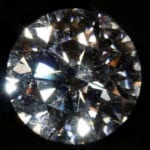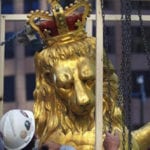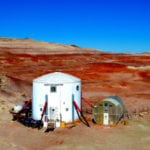 Weird Stuff
Weird Stuff  Weird Stuff
Weird Stuff  Mysteries
Mysteries 10 Tragic Disappearances and Deaths in Joshua Tree National Park
 History
History 10 Ways Childhood Really Sucked in the Old West
 Music
Music 10 Name Origins of Famous Bands from the 1990s
 Religion
Religion 10 Biggest Turnarounds by the Catholic Church
 Weird Stuff
Weird Stuff 10 Unbelievable Times Laws Had Unintended Consequences
 Humans
Humans Ten Historic Women Who Deserve Way More Credit Than They Got
 Movies and TV
Movies and TV 10 Films That Spawned Major Lawsuits
 History
History Ten Times Towns Were Wiped Off the Face of the Earth
 Creepy
Creepy 10 of the Most Disturbingly Haunted Public Houses in the UK
 Weird Stuff
Weird Stuff 10 Niche Subcultures That Are More Popular Than You Might Think
 Mysteries
Mysteries 10 Tragic Disappearances and Deaths in Joshua Tree National Park
 History
History 10 Ways Childhood Really Sucked in the Old West
Who's Behind Listverse?

Jamie Frater
Head Editor
Jamie founded Listverse due to an insatiable desire to share fascinating, obscure, and bizarre facts. He has been a guest speaker on numerous national radio and television stations and is a five time published author.
More About Us Music
Music 10 Name Origins of Famous Bands from the 1990s
 Religion
Religion 10 Biggest Turnarounds by the Catholic Church
 Weird Stuff
Weird Stuff 10 Unbelievable Times Laws Had Unintended Consequences
 Humans
Humans Ten Historic Women Who Deserve Way More Credit Than They Got
 Movies and TV
Movies and TV 10 Films That Spawned Major Lawsuits
 History
History Ten Times Towns Were Wiped Off the Face of the Earth
 Creepy
Creepy 10 of the Most Disturbingly Haunted Public Houses in the UK
10 Surprising Things Found In Space
Since the early days of space travel, there has been a strong public interest in uncovering the secrets of the universe. That said, space is weird, and so are we. Not only have we found strange natural wonders floating through the vacuum of space, but we’ve also left our own unique mark on the universe. Here are just a few eccentric things we’ve found in space and some other things we lost along the way.
10 Alcohol
A few giant clouds of alcohol have been found in the Milky Way and in areas surrounding star nurseries, the largest of which carries enough booze to make 400 trillion trillion pints of beer. In addition to your old college friend ethanol, scientists have found equally large clouds of methyl and vinyl alcohol. Unfortunately, as with most cool things in space, these clouds are too far away for us to do anything fun with them. Still, their existence is exciting to scientists and not for the reasons you might think.
Alcohol is an organic compound, which means that it carries the basic materials needed to sustain life. Finding these molecules around areas where stars recently formed may tell us more about how our world was created and how life came to exist on it. A specific cocktail of molecules is necessary to create complex life, and these clouds show how those kinds of reactions happen naturally in space.
Remarkably, our solar system doesn’t even come close to having the ideal conditions for creating these reactions. Does this mean that somewhere out there, there is a more complex life force evolving at a much faster rate than we are? Let’s not jump to conclusions, but it’s possible. The universe is a weird place—a weird place occasionally filled with massive amounts of booze.
9 A Tiny Art Museum
In 1969, a top secret mission took flight along with the Apollo 12 lunar lander. The goal—to send the works of Andy Warhol and five other artists to the Moon, creating the first and only extraterrestrial art museum. Historians now believe that this mission was successful, claiming that a chip 2 centimeters (1 in) wide displays these six drawings and remains on the Moon to this day.
The history of the Moon museum is a mystery in and of itself. Forrest “Frosty” Myers, one of the artists involved in the conspiracy, came forward after an identical chip was found in an online auction six years ago. According to Myers, a scientist named Fred Waldhauer created the piece, shrinking each work and imprinting them on the small ceramic chip. Waldhauer reportedly knew one of NASA’s engineers who was capable of smuggling the works onto the lunar lander. While this engineer’s identity is unknown, Myers shared a telegram with historians that may prove the mission’s success. The telegram, sent on the Apollo 12 launch date, reads: “You’re on. A-OK. All systems are go.”
So, we know how the chip made it to the Moon, but the real question is why? Apollo 12 launch pad foreman Richard Kupczyk may have some answers. He openly admitted to USA Today that it was pretty common for engineers to sneak small items onto the landers. “Apollo was something bigger than life,” said Kupczyk, who believes strongly in the Moon museum’s success. “We were all part of it. We wanted to leave a mark.”
Art and science may have distinct histories, but they’ve always evolved together. The Moon museum stands to show that art had its place in the space race and that ingenuity on both fronts has been, and always will be, a purely human endeavor.
8 The Death Star
Out of Hollywood’s long list of space movies, few images are quite as iconic as the Death Star. Something about this stoic beacon of destruction captures everything that we love and fear about space—mystery, darkness, vastness, and, of course, explosions. With the recent revival of the Star Wars franchise, it’s clear that our love for stuff blowing up in space knows no bounds. Of course, the idea of a super-charged weapon capable of destroying entire planets is purely fiction . . . or is it? NASA’s Kepler telescope recently observed a white dwarf that is disintegrating its own planet, a real-life star causing real-life death.
Don’t worry; while it’s true that this star is out there destroying planets, it operates a little differently than Grand Moff Tarkin’s ride. The killer star is ripping its planet apart with its extreme gravity. NASA saw debris from the planet falling into the white dwarf, like a trail following a comet. This form of planetary destruction is much slower than the Empire would prefer.
The ill-fated planet, which is about as large as Texas, is expected to be destroyed in the next million years or so. In a press release following the observation, astronomer Andrew Vanderburg pointed out that this is the first time we’ve ever had a front-row seat to the death of a solar system. It might not be the explosive show that Star Wars fans were hoping for, but it’s still pretty cool.
7 The Oort Cloud
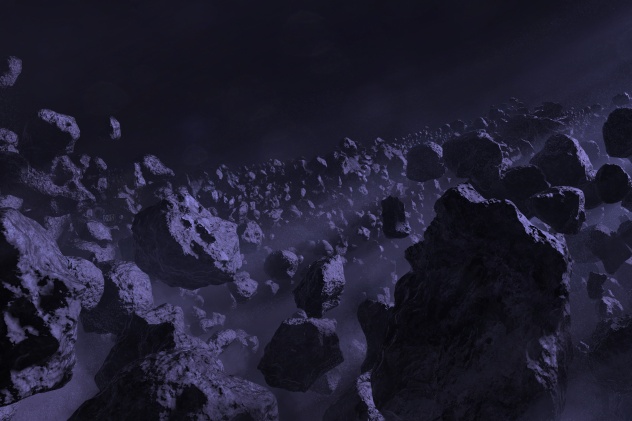
At first glance, nothing about the Oort Cloud is out of the ordinary. It’s a big patch of icy space that tosses out a comet every now and again, giving us occasional air shows from celebrities like Halley’s Comet. We have a pretty good idea of what it’s made of, how big it is, and when it formed. So, what’s the catch? Nobody has ever seen it, and we aren’t totally sure that it exists.
Here’s the thing about the Oort Cloud: It only exists in theory. As of right now, it’s our only real explanation for the comets that seem to come out of nowhere, showing up at strange intervals with unusual orbits. The cloud would have to be a certain shape and size to release comets in these patterns, and it would have to be made of specific compounds to cough out the rocks that we’ve studied. At our best estimate, it should also be pretty far away—about one light-year, to be exact. This distance is one reason that nobody has seen the Oort cloud, but given that we have telescopes that can see into the beginning of time, there’s really no excuse for not having found it yet. Maybe if the Oort Cloud were filled with booze, NASA’s observatories would be more motivated.
6 Space Hubcap
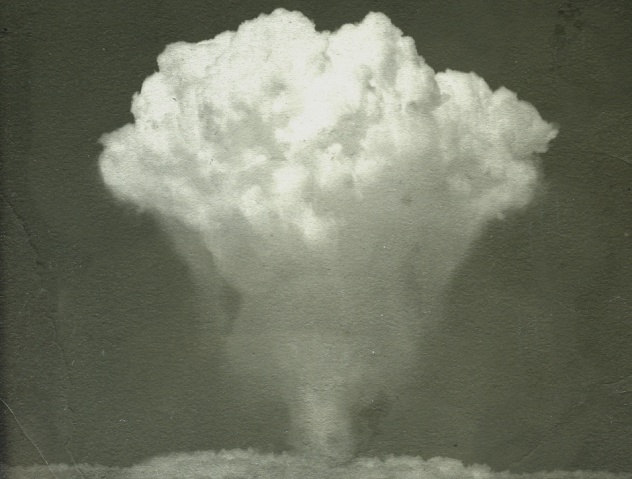
If you asked NASA about the first man-made object to enter Earth’s orbit, they would tell you about Sputnik 1, which took flight in October 1957. If you asked someone with an interest in space folklore, they’d fondly tell you the story of Space Hubcap.
The story begins two months before Sputnik’s takeoff, when the US launched a series of tests on the plausibility of underground storage for nuclear weapons. On August 27, 1957, the safety measures in place to contain one such test did not work quite as planned. In what should have been a contained detonation, the force of the explosion vaporized the concrete above it and blasted through a narrow 150-meter (500 ft) shaft. At this point, there was only one thing standing between the bomb and freedom—the small steel lid covering the shaft. It launched into the air at six times the velocity needed to leave Earth’s gravity, never to be seen again.
There is some debate over whether the so-called “Space Hubcap” actually made it into space. On one hand, the initial calculations of the cap’s speed only measured the force with which it was hit, ignoring important factors like gravity and air resistance. The man who made those calculations, Bob Brownlee, has expressed doubt that his numbers hold any real meaning. Others believe that Space Hubcap burned up as it tore through Earth’s atmosphere. Without specific data on the force of the explosion, the weight of the cap, and the strength of the steel, we have no way of knowing what really happened.
Could this little metal lid be soaring through space as we speak? It’s possible. Either way, Space Hubcap’s name will live in glory as a pioneer to an era of exploration.
5 Golf Balls
If you tried to guess the record is for the longest golf drive in history, you’d probably be wrong. It’s not your fault; we aren’t actually sure how far the world’s longest golf drive went, since it was never found after its launch from the International Space Station (ISS). Soviet cosmonaut Mikhail Tyurin made the shot in November 2006 as part of a commercial for Element 21, a Canadian golf company. He reportedly missed the shot, too, which is impressive, given that his target was the entire planet Earth.
Even with the missed shot, Tyurin’s golf ball likely burned up during reentry a few days after it took flight. That doesn’t mean that space is free of golf balls, though. Apollo 14 astronaut Alan Shepard also drove a few balls during an extravehicular activity (EVA) on the Moon, all of which were left behind when the team returned to Earth. According to Shepard, one of the shots went for “miles and miles and miles.” That’s not exactly a scientific measurement, but we’ll mark him down as a runner-up to Tyurin.
4 Lightning
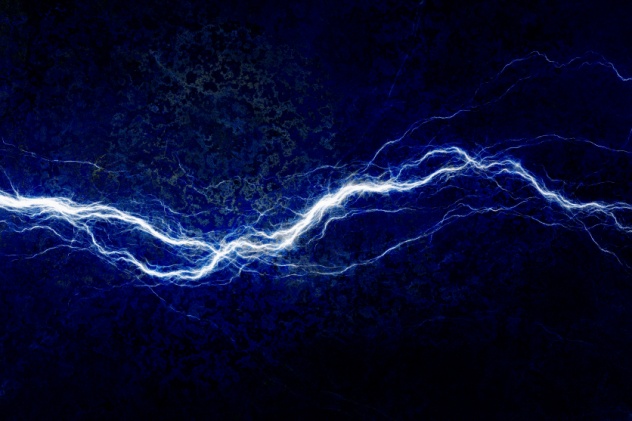
Two billion light-years from Earth, Nikola Tesla’s ghost is having one hell of a party. The strongest electrical current ever recorded has been observed there, surging through space-time with the force of a trillion lightning strikes. While this storm is the largest of its kind, it certainly isn’t the first. Lightning storms can appear naturally in empty space, usually around black holes, where magnetic fields build up large electrical charges.
This particular storm probably came from an especially massive black hole, seeing as the storm itself (or rather a single, supercharged bolt of lightning) stretches for more than 150,000 light-years. To put that in perspective, it’s longer than the entire Milky Way. The storm holds enough energy to power Earth’s cities for millennia, but it would likely fry us to a crisp first. Maybe it’s a good thing we have a buffer zone of two billion light-years.
3 Urine
You may have wondered: How do astronauts pee in space? NASA’s scientists have spent a lot of time and money debating that very question. The answer—a $50,000 toilet, complete with suction and an airlock that blasts urine into space. While newer models use high-tech filtration systems to turn urine into drinkable water, most of the older systems have followed old sailing tradition: Just throw it overboard.
Truth be told, “just throwing it overboard” is a much more complicated process in space. The vacuum that throws out space waste costs around $30 million, and astronauts have to undergo a lot of training to learn how to use it properly. Once they get to space, though, the experience is something to remember. Apollo 17 commander Eugene Cernan called the sight of urine droplets turning to ice in space one of the most amazing experiences from his flight, and astronaut Tom Jones recalled watching a crewmate pee upside down. In space, even the most basic human functions can get turned on their heads.
2 SuitSat
When they’re not busy doing cutting-edge science, the astronauts on the ISS apparently have some time on their hands. It was during such time that Russian astronaut Sergey Samburov had an idea: What if they turned an old spacesuit into a satellite? Seeing that each spacesuit is a multimillion-dollar investment, recycling their parts isn’t such a bad idea. All they had to do was take some old suits and turn them into a functioning spacecraft. After switching on some internal sensors and throwing in a radio, the scientists aboard the ISS had done just that. All it needed was someone to listen for its signal, and people all over Earth were ready, antennae up and radios on.
SuitSat (also known as Mr. Smith to Americans, and Ivan Ivanovich to Russians) launched from the ISS on February 3, 2006, carrying greetings in five different languages for Earthlings to pick up. Three hours into his flight, however, something went wrong. People listening on Earth and the ISS could no longer pick up his signal. All communications with Mr. Smith had been lost. NASA suspects that the radio’s batteries froze in the harsh conditions of open space, but there’s no real way to know what went wrong.
Whatever killed Mr. Smith, the garbage explorer likely burned up in Earth’s atmosphere a few weeks after its launch. It was a quiet end for a satellite that was never meant to exist in the first place. Though it may be lost, SuitSat is remembered as a testament to the power of impromptu science and an explorer who paved the way for future SuitSats.
1 Possible Ocean Life
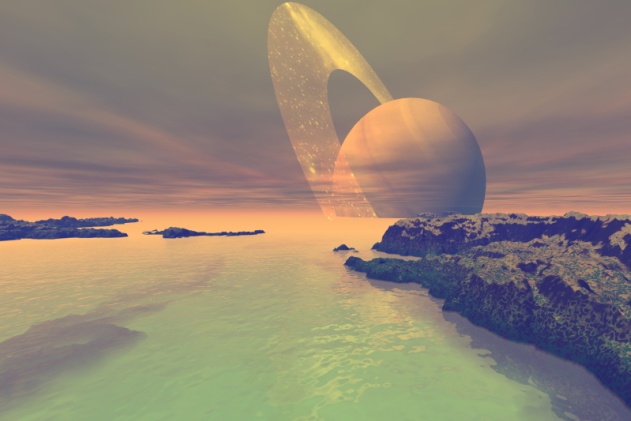
NASA has uncovered promising evidence of life in the oceans of Saturn’s largest moon, Titan. Your first thought might be that Titan is too cold for water, oceans, or life, and you’d be right, by Earth standards.
The oceans on Titan aren’t made of water at all. They’re actually made of methane, which liquefies at Titan’s extremely cold temperatures. The organisms in these methane-filled oceans would be similar to those on Earth (made of cells, breathing with some sort of respiratory system), but instead of the oxygen-based makeup of Earth cells, these organisms would have methane-based cells. Experiments have shown that methane-based cells are not only possible, but plausible in the extreme conditions on Titan. This research, in addition to atmospheric readings that suggest organic respiration on Titan, is one of the more promising leads in NASA’s search for life.
While it may be a stretch to imagine alien mermaids swimming in our own solar system, we really can’t know for sure. At least, not until we send a submarine out there to find out.
